QueueMetrics 15.10
'QueueMetrics 15.10' is a release centered around the idea of making the suite more flexible and easy to use than ever.
-
New concepts: Skills, Tags and Features
-
Improving the usability
-
Fixing major and minor bugs
QueueMetrics 15.10 fully supports Asterisk 13.5, as well as any older Asterisk version.
New concepts: Skills, Tags and Features
This release of QueueMetrics introduces the concepts of tags, features and skills, as optional ways to categorize your traffic.
-
A tag is a specific attribute that splits calls in a queue into mutually-exclusive subgroups. For example, if you were to implement an inbound call-center for booking events, you could add a tag for each event - people call multiple numbers but are queued on the same physical queue. Or if you run an outbound campaign, you can use the tag to track the list from where the number was taken, in order to track its sales results. Tags are meant as a general mechanism to replace existing "sub-queues" that keep a clean distinction between the reason why a call was queued and the queue that was used to process it.
-
A feature is a secondary outcome. A call can have multiple features; some of them might be valid only if some primary feature was set. For example: when you make a sale, you could have optional features like "Sent sales booklet" to make sure that some procedure was followed. You can optionally have a goal feature, that are features agents are scored upon, and that are counted/tracked separately.
-
A skill is a specific attribute of a call that requires a special ability to be present at a required grade in the answering agent. For example, a call might be routed asking for "English: 50" and "Internet: 70", therefore asking for an agent who is pretty good at supporting Internet issues and that speaks decent English.
Those new concepts are very powerful and make QueueMetrics able to analyze calls at a way finer level.
New data blocks were added to reports, the Real-Time page and configuration in order to track those new elements.
See: QueueMetrics User Manual, chapters "21.7 - Feature Codes", "21.8 - Tag Codes", "21.11 - Skills"
Skill-based routing
QueueMetrics is able to track skills required on calls; it will display them on the Real-time page and will report on them. A call can have multiple skills associated at once; and skills can be used as filtering criteria in the Custom reports page.
New real-time reports
The real-time reports is made way richer with three new data blocks:
-
Aggregated queue view - where you can see the current total time for selected queues; average wait and talk times; and sales / features statistics
-
Aggregated tag view - where you can see statistics of incoming traffic by tag
-
Agent outcomes - where you can see live presence, number of calls offered and answered, pauses and sales results / features
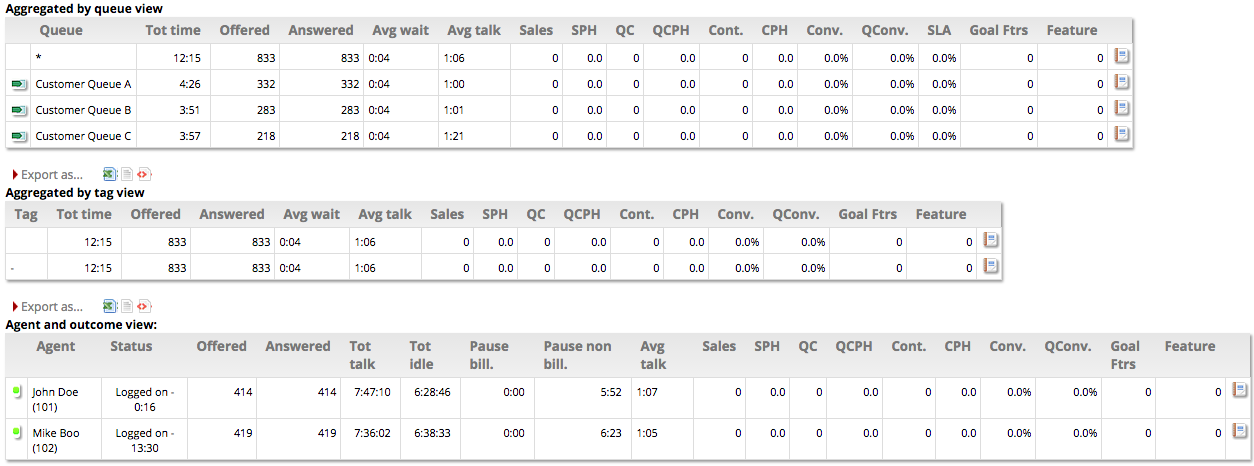
Plus, the new Real-time page lets you "drill down" immediately; by clicking on the "Report" icon, you can see a reports filtered with the same criteria and for the same time period the Real-time page is showing. This, in a sense, blurs the distinction between the Real-time view and the full reports view.
New Reports
A number of new reports were added to track Skills, Tags and Features.

-
OU07 - Call results, by tag
-
OU08 - Call results, by feature code
-
AG13 - Agent Session View
-
AG14 - Queue Session View
-
AG15 - Agents by Hour
-
AG16 - Tag Session View
-
AG17 - Cumulated sessions by Queue, Tag
-
OK15 - Required Skills for Taken Calls
-
UN19 - Required Skills for Lost Calls
-
UN20 - Required Skills for All Calls
They are documented on the User Manual and shuld be manually added to existing systems.
Known numbers
Known numbers are phone numbers that are known to QueueMetrics and can have properties associated to them. They are meant to be used by an API call in the Asterisk dialplan to take routing decisions.
At the moment, QueueMetrics will use known numbers to:
-
Earmark specific calls as BLACKLIST or VIP, where at the dialplan level a proper function is implemented to route thise numbers to specific high priority / low priority queues
-
Store a known description for the number that can be used to set a caller-id for the number in a format that will make the number "stand out". It coud be the name of a client, or their CRM IDs
-
Store a known agent affinity for the number, where at the dialplan level there is an attempt to route the call to a specific agent before queuing the number on a "general purpouse" queue
See: QueueMetrics User Manual, chapter "21.12 - Known numbers"
Tracking of features on Icon
The Icon page was updated to allow input and editing of features as sub-outcomes.
Usability and layout improvement
New configuration and security keys editors in QueueMetrics
Two brand new editors have been implemented in QueueMetrics version 15.10. They let administrators enable/disable QueueMetrics features globally or per-user.
The new link "Explore system parameters" lets you manage the global features with the administrative tools of the home page. Following the link an administrator is redirected to a new page with the most important QueueMetrics features listed. Properties are grouped together by area of interest.

With the new search box you can reduce the number of options displayed when searching for as specific feature.
Pre-defined user related security keys are now easily assignable through a new editor. Click on the button "Handle Keys" available on the users and classes administrative pages to run the editor.
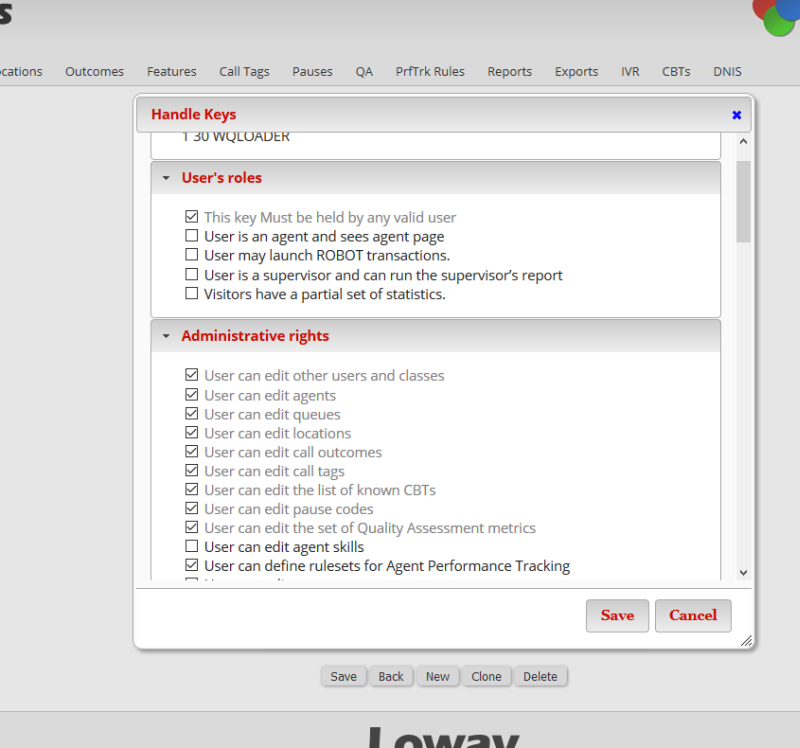
Administrators can assign or remove security keys for a specific user or class, by clicking on the related checkbox.
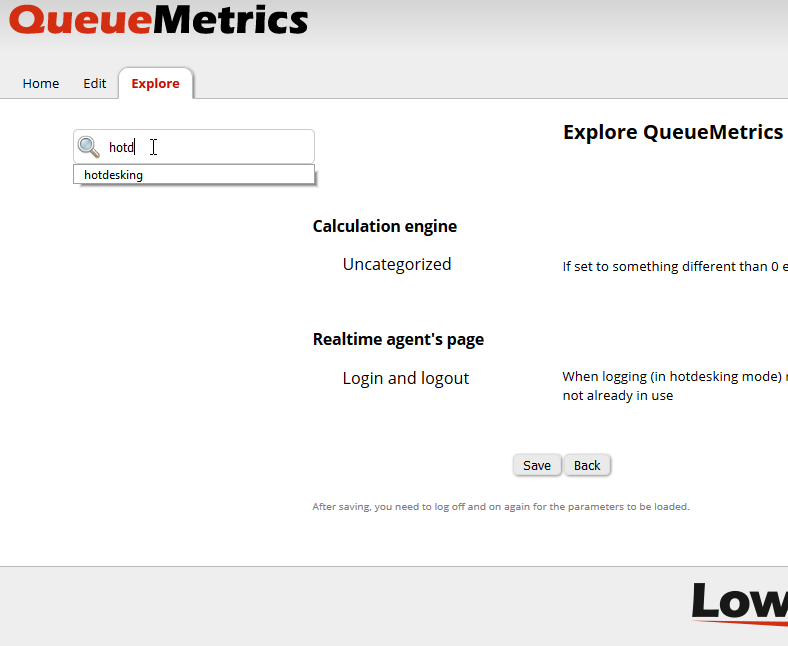
Keys appearing grayed out are inherited from the class that the user belongs to and can be modified through the editor.
Administrators automatically select keys that should (or should not) be checked together in order to properly enable (disable) a specific QueueMetrics feature.
See: QueueMetrics User Manual, chapter "21.24. Configuring system preferences"
WombatDialer integration - Schedule outbound calls from Icon Agent page
WombatDialer campaings can be assigned to queues by mean of the new WombatDialer settings panel, located on the queue definition administrative page.
Several campaings can be assigned to each queue and a maximum recall period can be defined.
As soon as campaigns are defined for a queue, agents will see them in the recall scheduler window in the agent realtime page. Agents can reach recall scheduler panel by clicking on the new icon found in the call list, as reported in the picture below:
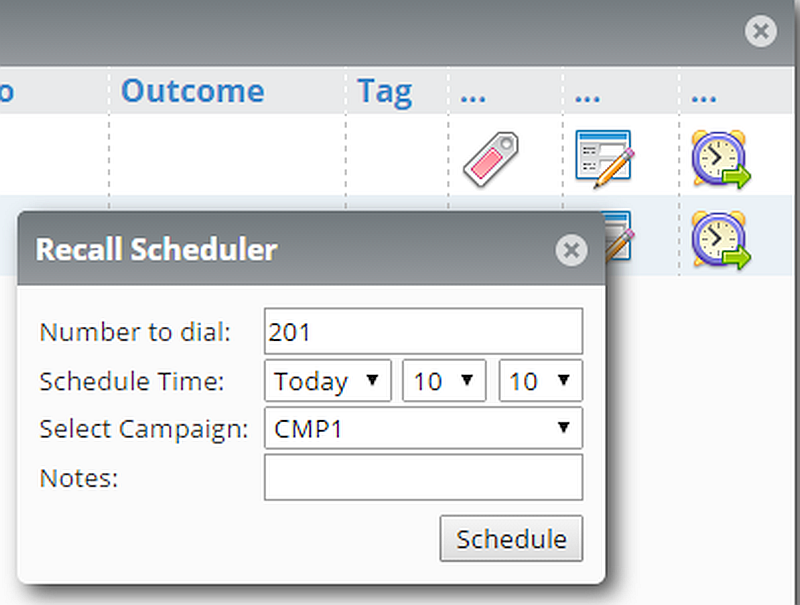
From the Recall Scheduler panel an agent can schedule a call. Scheduled calls will be queued to Wombat for the selected campaign and optional notes. Calls will be evaluated by Wombat at the specified time.
Plus the Call List panel has been improved to track Outcomes and features effectively.
See: QueueMetrics User Manual, chapter "8.7.3. The call list panel"
Improved WebRTC softphone compatibility
The embedded QueueMetrics Icon softphone in 15.10 is compatible with the latest Firefox releases, as well as Chrome.

As found in the compatibility matrix (see http://bit.ly/1OUhF68 ) Firefox users can receive calls directly from the WebRTC softphone embedded in QueueMetrics Icon.
Updated layouts for Custom Report and Realtime pages
The Custom report and Realtime pages have a new layout.
The accessibility of filters of the Custom report page is increased and the bottom line allows to save custom queries for later usage. Custom queries will be placed on the home page and can jump-start either reports or real-time views.
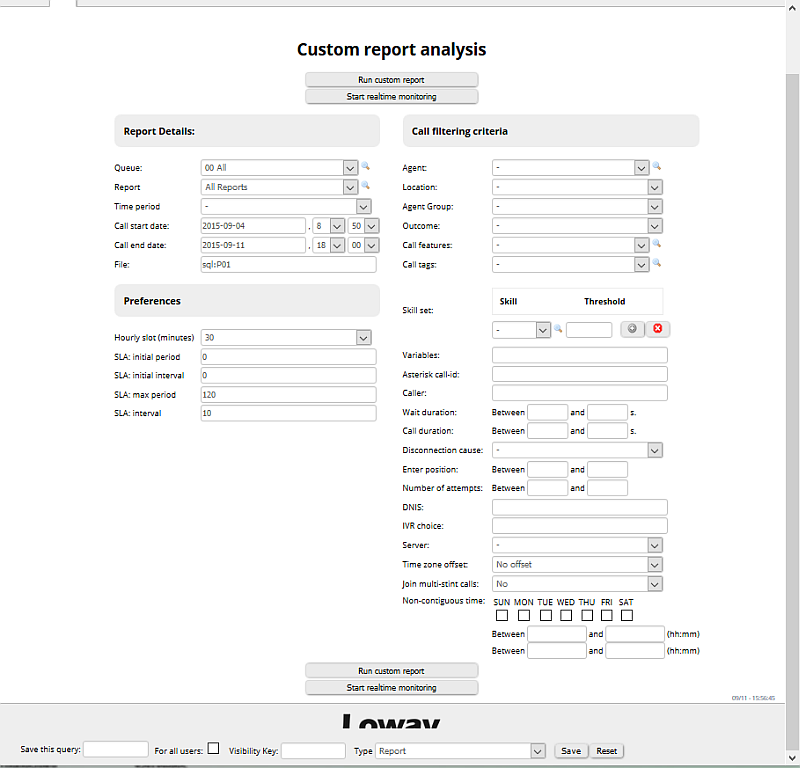
The realtime page presents a new left side menu bar. It contains the relevant analysis filters and can be hidden when not needed.

Click’n go reports from the realtime page
QueueMetrics 15.10 introduces a new click’n go feature to all realtime reports.

With this feature a user can start an historical report with a single click from the realtime page. The query for historical reports is set with same parameters generating the source realtime page report.
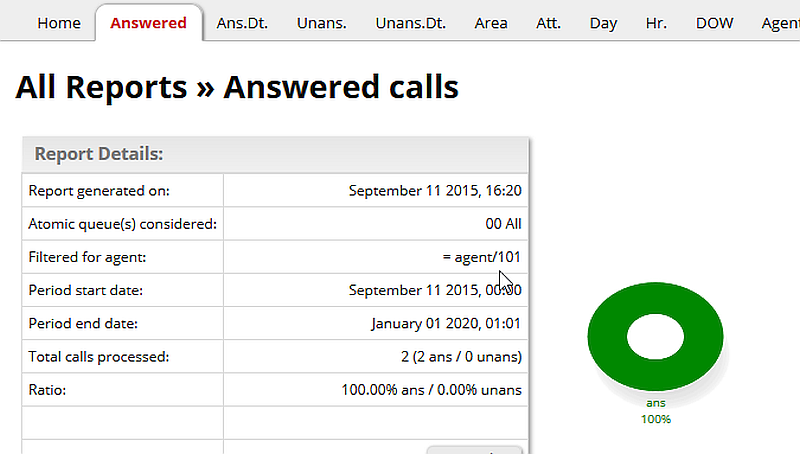
Misc items
-
It is now possible to generate direct links to the log-in page of QueueMetrics, so that from an external page you can link to QM and log in at once
-
Misc performance improvements that should be noticeable on systems having > 200 agents
-
Support for CentOS 7 / MariaDB
-
The JSON API now implements the full set of agent actions: you can e.g. log in an agent at the PBX level by caling a QueueMetrics API
Bug fixes
A number of important bugs were fixed and some miscellaneous minor items were solved as well.
-
#2557 - Automatic logon on non-auth direct ink
-
#2469 - New centralized CBT tracking
-
#2473 - Sorting by columns on the Performance Tracker Page
-
#2511 - Multi-stint: if set outcome on non-last call, outcome is ignored
-
#2554 - User-selectable timeout for entering post-call information
-
#2555 - Expansion of Tag, Features and Variables in URI
-
#2570 - Realtime engine caches events for a period longer than required
-
#2387 - Conversions are not counted by Performance Tracker
-
#2470 - Pushing training to Agents
-
#2472 - Adding a note to CBTs and Coaching tasks
-
#2475 - Editing QA forms
-
#2612 - New index for QA - Mysql 5.6.20
-
#2691 - Agents duplicated in Training and Coaching page
-
#2713 - Hotdesking not working when running reports
-
#2781 - Very slow queue expansion
-
#2885 - On RT error, 404 qm_start instead of error page
-
#2897 - Performance issues on Calls by Agent
-
#2899 - Slow exception on U.cint()
-
#2545 - Docs fail2ban
-
#2667 - Upload of batches of queue_log rows
-
#2670 - Centos7 / Elastix 4
-
#2726 - Running multiple TPF requests in parallel easily breaks
-
#2737 - Encoding issue on JSON responses API
-
#2886 - JSON API: cannot acces single user
-
#2888 - Wrong qloader dependency on CentOS7
-
#2891 - Direct login links
-
#2904 - Error importing from queue_log (configuration wizard)
-
#2911 - JSON calls seems not terminates when adding elements API
-
#2915 - Error editing agent groups
-
#2665 - User preference keys are sometimes duplicated on the DB
-
#2666 - Agents are not shown as logged-out in Icon
-
#2692 - New smarter drop-down selector in Icon
-
#2706 - User-definable go-to URL when clicking on the QM logo
-
#2707 - Wombat recalls: server interactions
-
#2708 - Performing agent actions through a JSON API
-
#2750 - Occupancy can be higher than 100%
-
#2779 - Invalid SQL with not numerical call_ids
-
#2786 - ErrProd 15.02: DayOfWeekFilter
-
#2787 - ErrProd 15.02: initCustomReport
-
#2802 - Overlap on SPH and similar
-
#2803 - SPH on IMM reports
-
#2804 - Wrong SPH in performance tracker
-
#2810 - Wrong SPH in AGAW
-
#2815 - Integrated softphone uses a plugin that is unsupported.
-
#2914 - Impossible to fill a QA form via API
-
#2797 - When the session expires, page is not correctly redirected
We hope you’ll enjoy your QueueMetrics 15.10 experience! Send us your comments and suggestions.
Thank you for supporting 'Loway'.